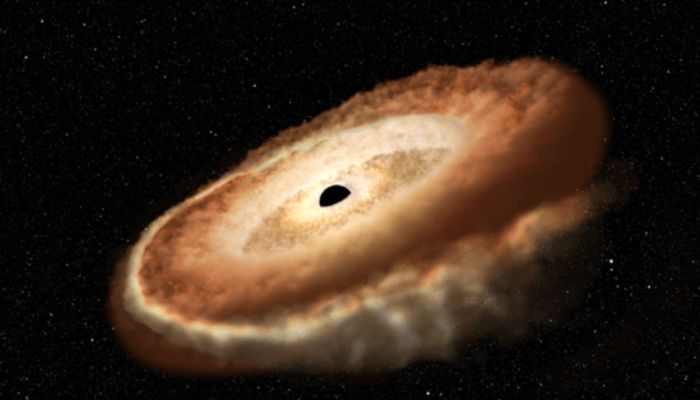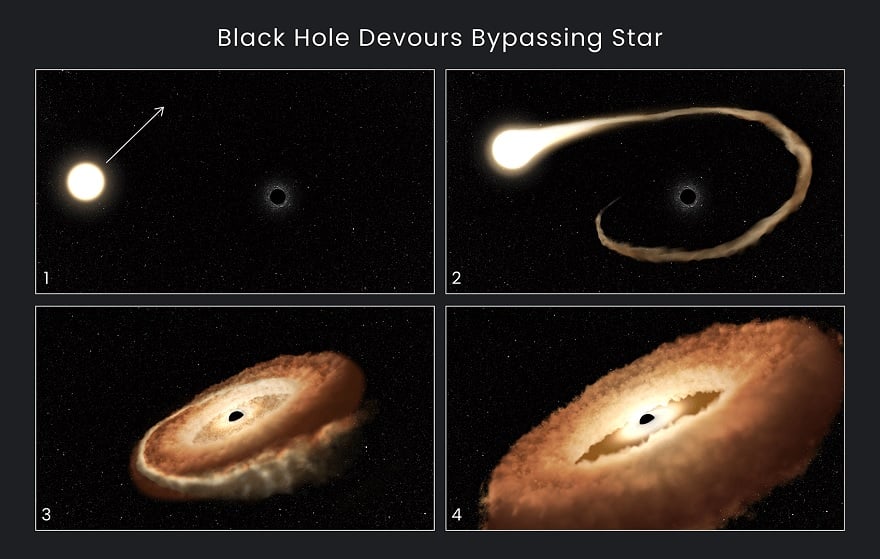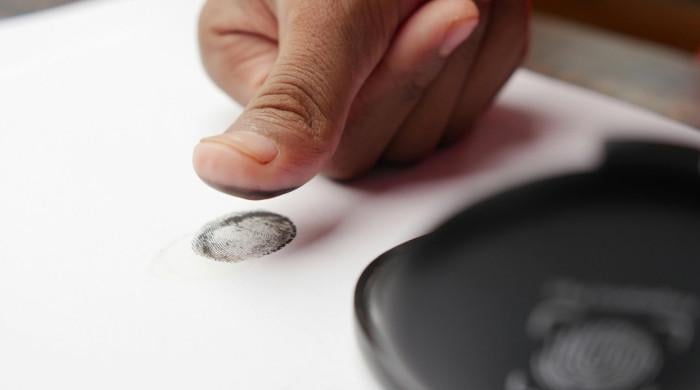WATCH: Star gets eaten up by 'hungry' black hole to become a doughnut
Hubble's strong ultraviolet sensitivity allowed astronomers to investigate the light and chemical emissions from the dying star
January 14, 2023

The Hubble Telescope has recently discovered another cosmic feast in progress. Black holes are known for suckling up neighbouring space objects. After a supermassive black hole destroyed a neighbouring star, converting it into a "doughnut" compared to the size of our solar system, researchers from NASA are now sharing their results online.
Large stars that explode as supernovae frequently collapse and generate black holes. Even light cannot escape due to how powerful its gravitational pull is. Since black holes are undetectable in theory, scientists must rely on the activity of neighbouring stars to detect their presence. The largest black holes are referred to as "supermassive" and scientists think that many galaxies contain these monsters.

The research from March 2022 discovered a black hole engulfing a nearby star in the galaxy ESO 583-G004 from a distance of about 300 million light years. Hubble's strong ultraviolet sensitivity allowed astronomers to investigate the light and chemical emissions from the dying star. These include, among others, hydrogen and carbon.
These stellar killings are referred to as "tidal disruption events" by scientists. Even though it doesn't seem particularly violent, the NASA team says that black holes are "messy eaters," releasing an equal amount of material to counterbalance the stellar matter they absorb.
Stars into doughnuts but how?
According to study authors, a star is only torn apart in this way a few times every 100,000 years in a galaxy with a supermassive black hole at its heart.
The All-Sky Automated Survey for Supernovae (ASAS-SN or "Assassin") made the first observation of this specific event, known as AT2022dsb, on March 1st, 2022. It is a system of ground-based telescopes that scans the night sky for erratic, violent, and brief phenomena occurring throughout the cosmos.
Scientists claim that although 300 million light-years away, it is still close enough to Earth and bright enough for the Hubble Telescope to observe this doughnut-making event with its ultraviolet spectroscopy.
“Typically, these events are hard to observe. You get maybe a few observations at the beginning of the disruption when it’s really bright. Our program is different in that it is designed to look at a few tidal events over a year to see what happens,” said Peter Maksym of the Centre for Astrophysics in a media release.
“We saw this early enough that we could observe it at these very intense black hole accretion stages. We saw the accretion rate drop as it turned to a trickle over time.”
Scientists interpret Hubble's data as coming from the extremely bright, hot, doughnut-shaped region of gas currently spinning around the black hole, even though the event is too far away to be seen with the naked eye. The group refers to this region as the torus and claims that this specific doughnut is as large as our solar system.
Maksym wrote that scientists were trying to get their heads around the event.
"You shred the star and then it’s got this material that’s making its way into the black hole. And so you’ve got models where you think you know what is going on, and then you’ve got what you actually see. This is an exciting place for scientists to be: right at the interface of the known and the unknown.”
The American Astronomical Society's 241st meeting was where the NASA team presented their findings.









